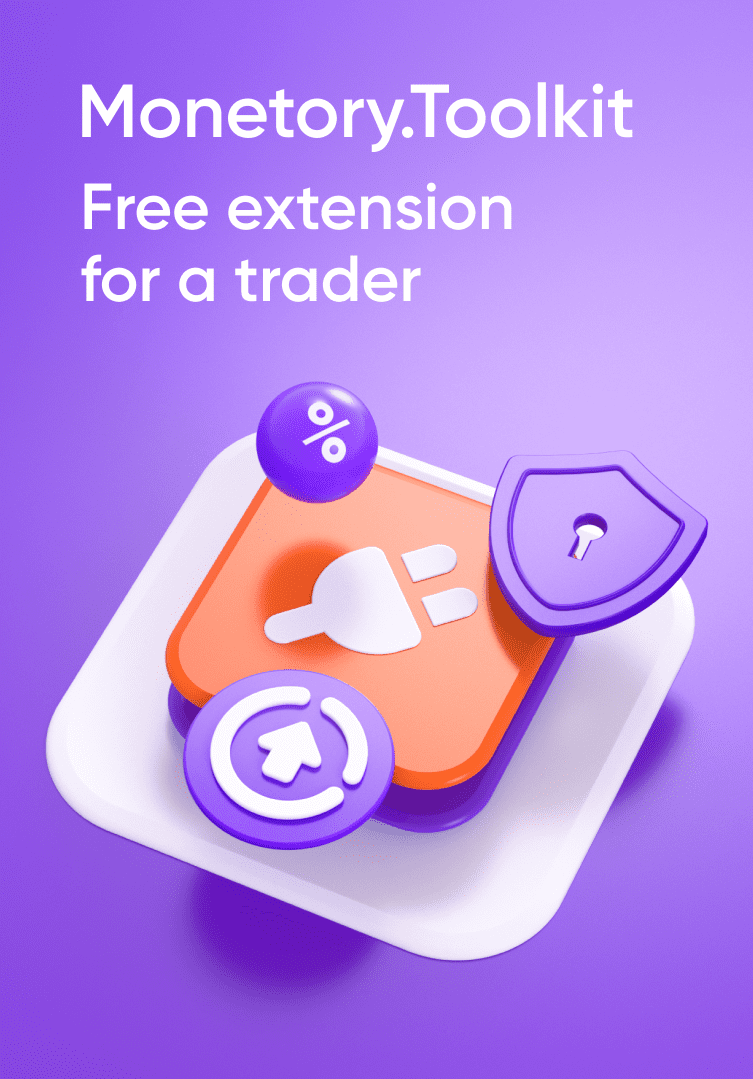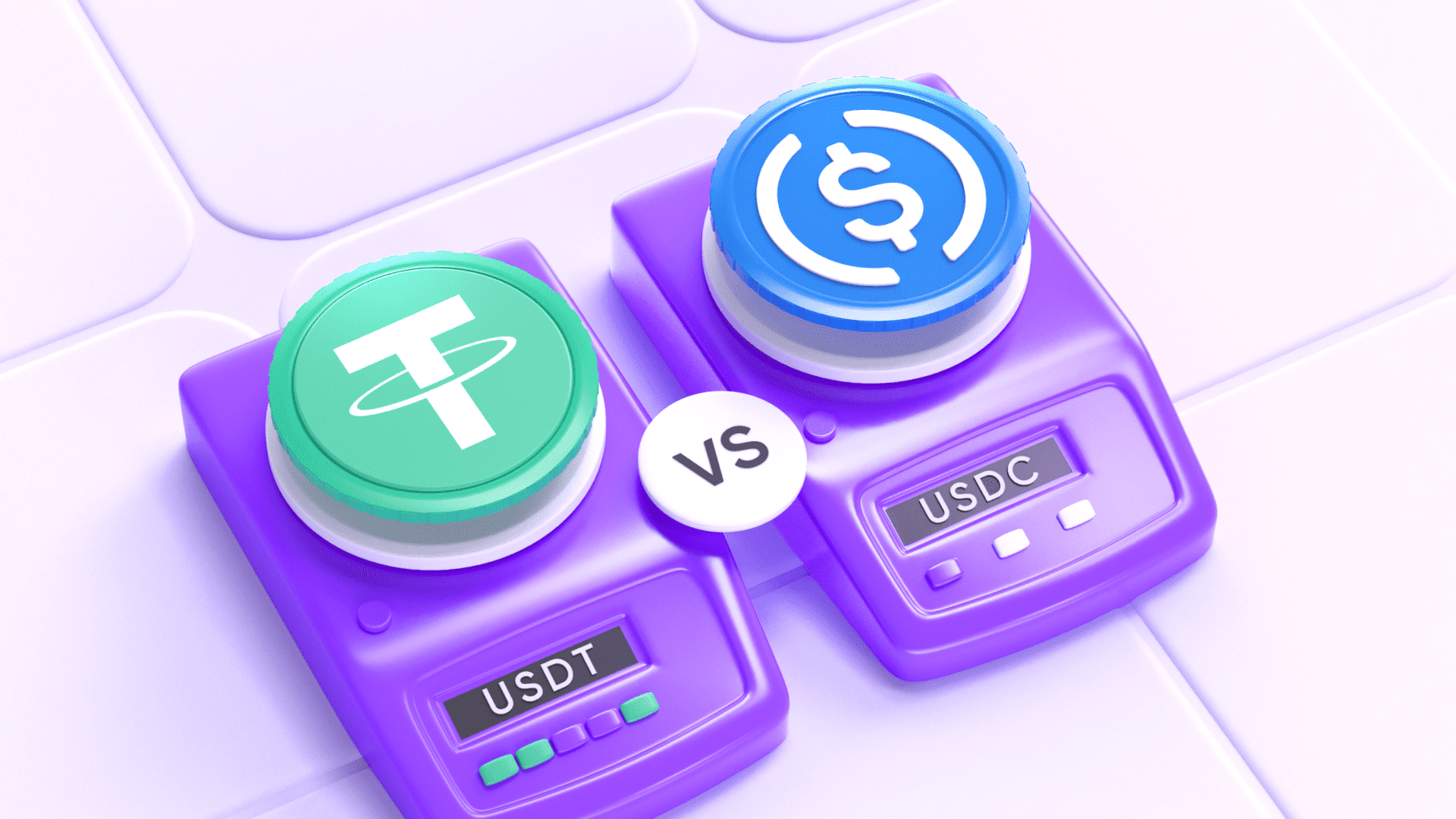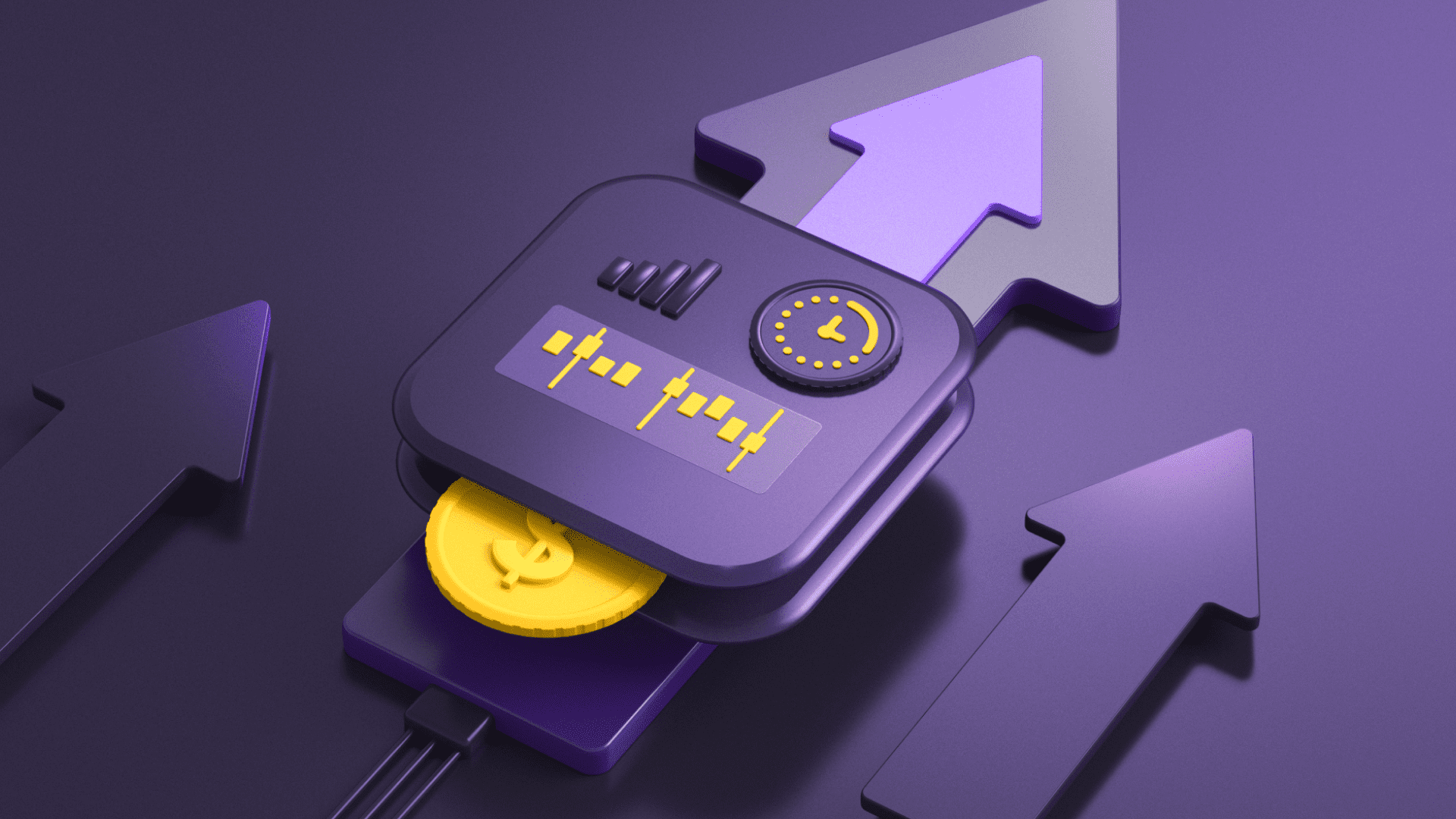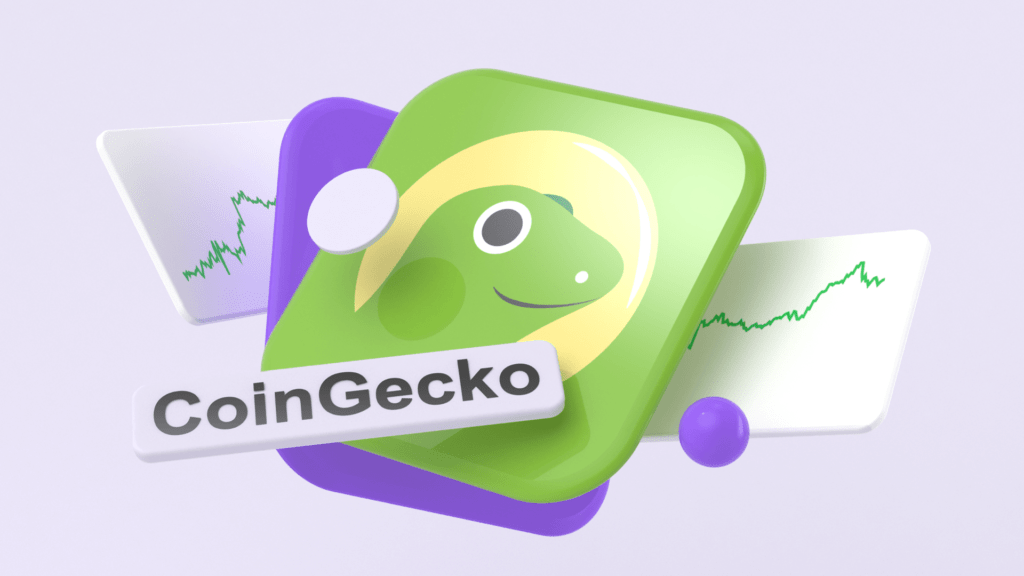
Have you been using CoinMarketCap for your crypto research? What happens when you can’t find the token you’re looking for? Or when the data isn’t updating as quickly as you need? It’s time to meet an alternative platform that has a few tricks up its sleeve.
CoinGecko is a cryptocurrency market aggregator offering a suite of unique tools. Beyond tracking prices, trading volumes, and market caps, it provides in-depth analytics for each coin and comprehensive information about DEXs and CEX exchanges, NFT collections, and DeFi protocols. Best of all, this wealth of data is centralized in one place and updated in real time.
In this article, we’ll discover:
- CoinGecko’s core features
- How it stands out from CoinMarketCap
- Tips for getting the most out of the platform
- Available tools and features on CoinGecko
What CoinGecko Offers
CoinGecko is one of the largest platforms for cryptocurrency analysis. It tracks and analyzes data for 14,903 cryptocurrencies and 1,135 exchanges — and these numbers are constantly growing.
On the CoinGecko homepage, you’ll see a bar displaying key stats: total cryptocurrency market cap, trading volume, Bitcoin and Ethereum dominance, and gas fees. Just below that, there’s a navigation panel with the platform’s main sections: «Cryptocurrencies», «Exchanges», «NFT», «Learn», and «Products».
You can find cryptocurrencies using the search. When you click on a coin, you’ll see a chart displaying its price movement over various timeframes — ranging from an hour to several years. But getting Bitcoin’s current price in dollars is something you can do almost anywhere. The more interesting data is below the chart: market cap, trading volume, circulating supply, and other key metrics.
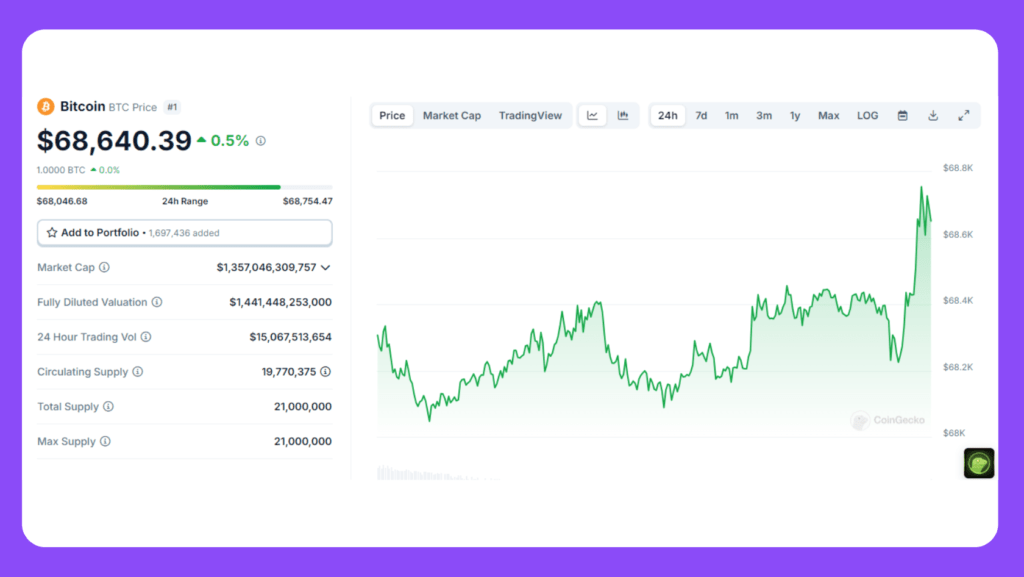
CoinGecko also offers an API for developers to automate data retrieval and build crypto applications. The CoinGecko Listing feature allows you to add your token to the platform, and the CoinGecko Converter helps you quickly calculate the value of any cryptocurrency in your preferred currency — whether it’s popular fiat or the most obscure altcoins.
But the real advantage lies not in individual features, but in their combination. CoinGecko gathers data from dozens of sources, analyzes it, and presents it in an easy-to-use format. With a user base of 10 million active users, 8 years of continuous data collection and analysis, and over 200 million monthly page views, CoinGecko stands out as a powerhouse in the crypto space.
How and Why to Register on CoinGecko
Most of CoinGecko’s key tools are accessible without creating an account. But if you want to take your experience to the next level, it’s worth registering — it unlocks additional features, like the «Portfolio» tool. This handy program allows you to input all your cryptocurrency holdings, and it automatically calculates their real-time value.
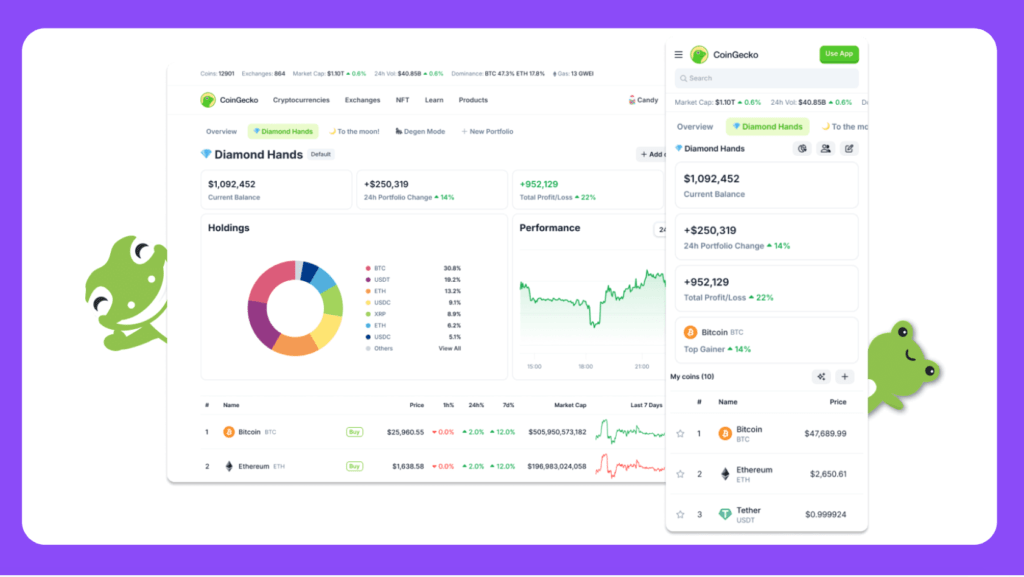
Imagine you bought 0.001 BTC, 0.02 ETH, and 1,000 DOGE. Instead of manually multiplying each coin’s quantity by its current price every time, you enter this data into your CoinGecko portfolio. Thus, you can easily track the total value of your assets in dollars and monitor any changes over time.
Another perk for registered users is the Candy feature. It’s the CoinGecko loyalty program. By visiting the site daily and completing simple tasks (like checking prices or reading news), you collect virtual «candies,» which you can later redeem for various rewards. These range from discounts on premium subscriptions to NFTs and even physical goods.
How to Register
CoinGecko offers three registration methods:
- Via Google account
- Via Apple ID
- The traditional way — using an email address
Premium Account
It’s also worth mentioning the premium account, which requires registration. With a premium account, you enjoy an ad-free site, a 20% boost in Candy rewards, and access to educational content. Plus, you get early access to site updates and membership in an exclusive group where you can connect with other crypto enthusiasts and even CoinGecko developers. There are two pricing plans:
- $10 per month
- $99.90 for a yearly subscription ($8.32 per month)
As a bonus, every premium user receives an NFT — a digital badge that proves your premium status.
Is a CoinGecko premium account worth it?
It depends on your goals and how often you use the site. If you only check CoinGecko a couple of times a week to glance at prices, the free version should be more than enough for you.
CoinGecko’s Toolset
At first glance, CoinGecko might not seem packed with features, especially compared to CoinMarketCap, where the number of buttons and sections can feel endless. However, CoinGecko provides everything necessary for both beginners and experienced traders. The platform offers a few unique tools you won’t find with its competitors.
Top Cryptocurrencies
Let’s start with the most basic and important tool on CoinGecko — the cryptocurrency ranking table. Here, all projects are ranked by market capitalization, and that’s not by accident. Market cap is the most objective indicator of a project’s scale.

Market capitalization gives you a clear idea of a cryptocurrency’s actual impact on the market. For example, a coin priced at $100 might have a much smaller market cap than a token priced at just $1 if the latter has a significantly larger supply in circulation.
In the table, you’ll find:
- The current price in your chosen currency
- Price changes over 1 hour, 24 hours, and 7 days (color-coded to show gains or losses)
- 24-hour trading volume — an indicator of trading activity and liquidity
- A compact 7-day price chart for quickly assessing trends
To make crypto filtering easier, there’s a «Categories» feature, allowing you to focus on specific sectors of the crypto market — whether it’s L2 on Ethereum, blockchains, NFT projects, or DeFi protocols. There are 469 categories at your disposal, covering virtually every niche in the crypto industry:
- Layer 1 and Layer 2 blockchains
- Meme coins
- Projects using different consensus mechanisms (PoW, PoS)
- Tokens held by leading crypto funds
- GameFi and metaverses
- Various DeFi protocols
Within each category, projects are still ranked by market capitalization, making it easy to identify the leaders in any given market segment. Additionally, there are two categories where you can track newly launched projects and see the top gainers or losers.
CryptoCurrency Overview
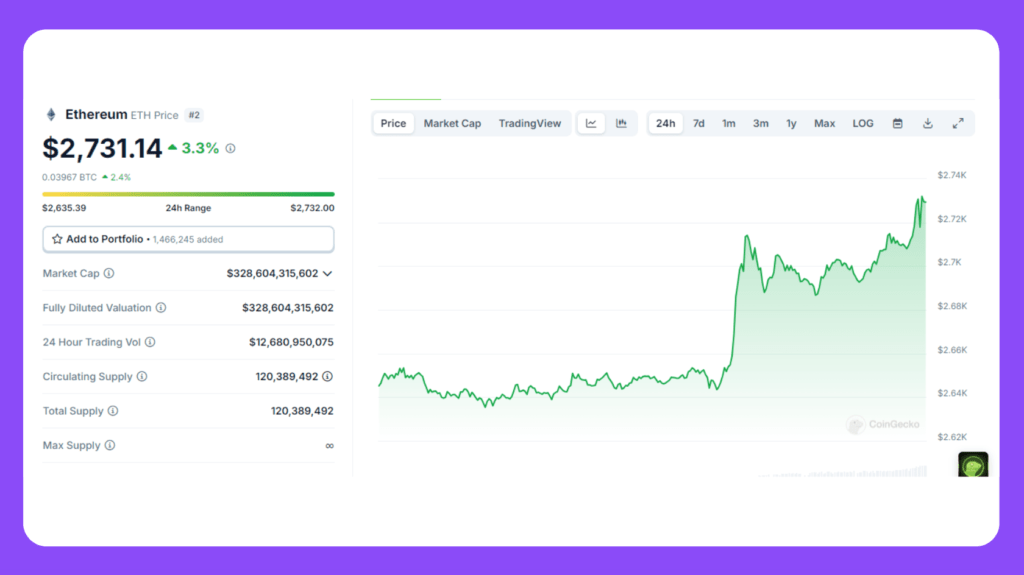
CoinGecko gathers and organizes all available information about a project, enabling users to conduct deep analysis. Let’s take Ethereum as an example.
- Current Price with Chart
- Market Capitalization — the total value of all coins in circulation
- Fully Diluted Valuation — a metric that factors in all tokens that will ever be issued. For Ethereum, these values match.
- 24-hour Trading Vol — CoinGecko not only includes data from centralized exchanges but also tracks activity on popular DEX protocols, providing a fuller picture of trading dynamics.
- Circulating Supply — the number of tokens currently available on the market (for Ethereum it equals to Total Supply)
- Max Supply — the total number of coins that will ever be issued (for Ethereum, this is unfixed due to its unique tokenomics).
But CoinGecko uses much more basic metrics. The platform provides extensive information on a project’s technical and social aspects:
- Website — for first-hand information about the project
- Explorers — to track any transaction and analyze network activity
- Wallets — useful for those holding lesser-known altcoins
- Community — to stay updated on news and developments
- Source Code (for open-source projects) — for more tech-savvy users
- API ID — for developers
- Chains — for tokens that run on other networks
- Categories — showing which segments of the market the project belongs to
- Historical Price — helping to assess growth potential and risks.
Below the price chart, you’ll find a concise but informative project description that outlines its core idea and key features. In the «Markets» section, you can see a list of platforms where the cryptocurrency is traded, along with trading volumes and real-time prices for each exchange.
Exchanges
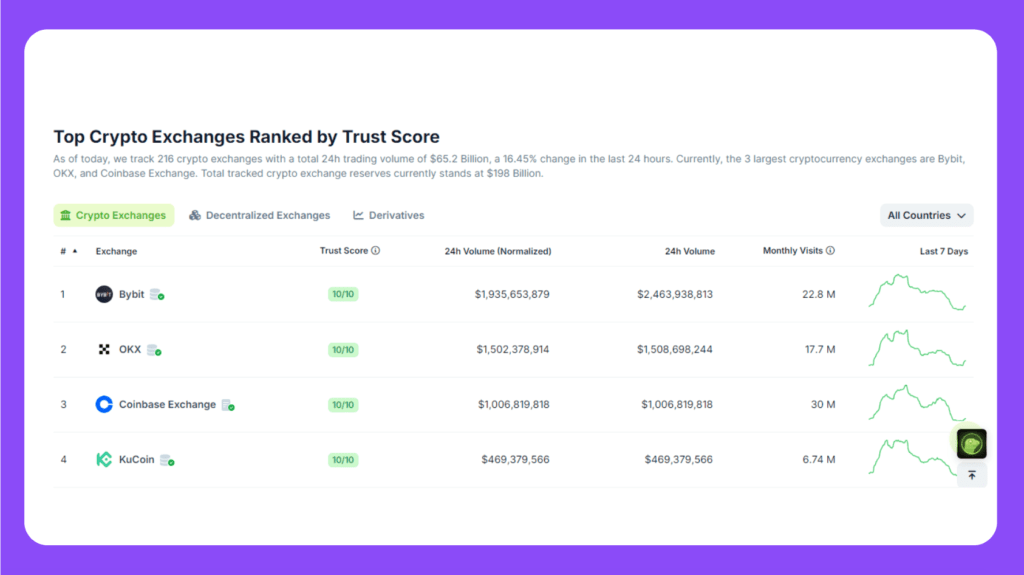
Another key tool is the cryptocurrency exchange directory, featuring over 1,000 trading platforms. This is a comprehensive map of the entire crypto trading infrastructure. It includes:
- Centralized Exchanges (CEX) — traditional platforms with order books
- Decentralized Exchanges (DEX) — protocols for direct crypto swaps
- Derivative Exchanges — for trading futures, options, and other derivative products.
Exchanges are ranked using the Trust Score, which is primarily based on trading volume — the most objective indicator of exchange activity and liquidity. Just as market capitalization reflects the scale of a cryptocurrency, trading volume shows an exchange’s true weight in the ecosystem. Clicking on any exchange opens a detailed page that includes:
- 24-hour trading volume
- Number of trading pairs
- Supported cryptocurrencies
- Available deposit and withdrawal methods
- Regions served
- Company information
- Security measures
- Contact details and social media links.
Chains
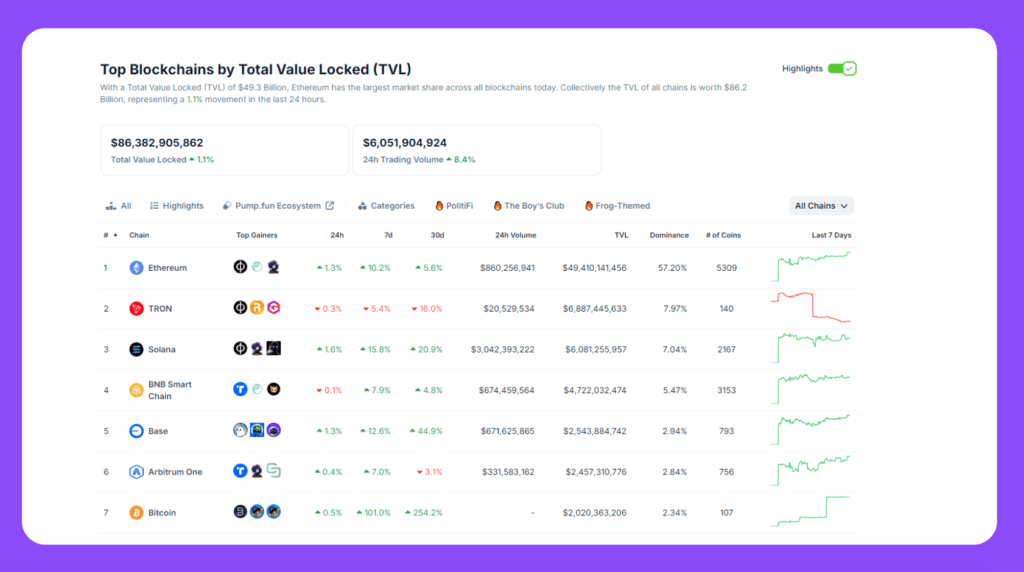
One of CoinGecko’s unique features, which you won’t find on CoinMarketCap, is a dedicated section for analyzing blockchain ecosystems. Think of it as an interactive map of the crypto universe, where each blockchain is a distinct world with its projects, tokens, and metrics. This section includes key data like the total value of all projects (TVL), daily trading volume, the number of active projects, and much more.
This tool allows you to track trends and the «hype» around specific ecosystems. For instance, TON, Solana, and SUI are currently gaining attention, and thanks to this feature, you can dive deep into what’s happening within those blockchains:
- Which new projects are launching
- Where investments are flowing
- Which tokens are showing growth
- How user activity is evolving
For each blockchain, you can access detailed technical information: consensus mechanisms, transaction speeds, block sizes, block rewards, upgrade histories, and development roadmaps. Each blockchain also includes a DeFi statistics section with key metrics like:
- Total Value Locked (TVL)
- Top DeFi protocols
- Liquidity metrics
- Yield farming returns
CoinGecko also monitors cross-chain activity — bridges between blockchains, transfer volumes, and popular routes for asset movements.
CoinGecko Converter
There’s also a classic currency converter — a simple tool, but one that’s essential at times. Its operation is straightforward: you select the base currency (crypto or fiat), input the amount, choose the target currency, and instantly get the conversion result at the current market rate. The converter database includes:
- All cryptocurrencies listed on the platform
- Major fiat currencies
- Real-time market prices
NFT
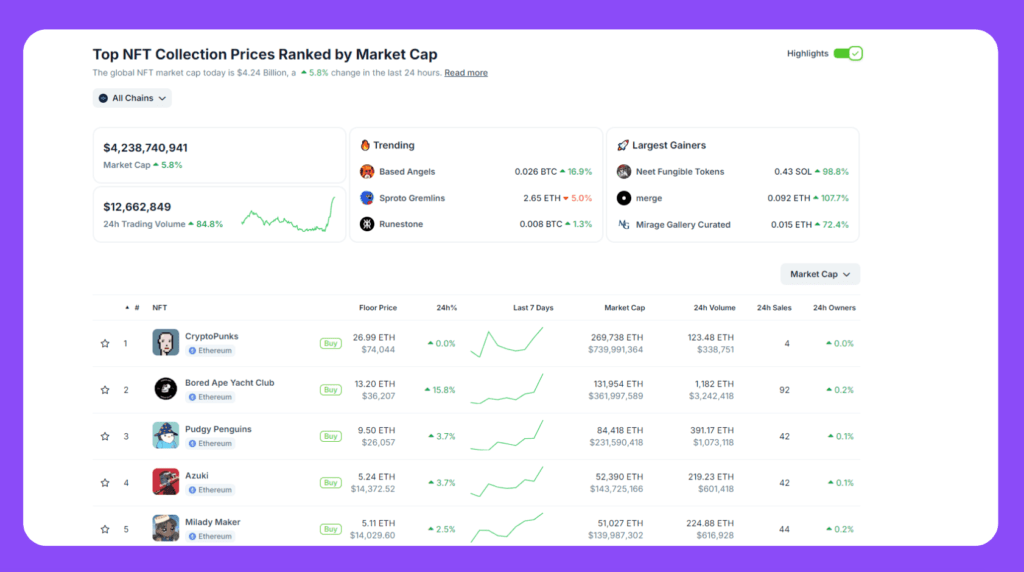
CoinGecko gathers and organizes data on various NFT collections, giving users a full picture of this fast-moving market. You’ll find a list of NFT collections ranked by trading volume — an indicator that best reflects the true activity and popularity of projects. Each collection comes with key data points:
- Floor Price — the price of the cheapest NFT in the collection
- 24-hour Trading Volume
- Number of Owners
- Total NFTs in the Collection
- Percentage of Unique Owners — an important metric showing how tokens are distributed.
When you visit a specific collection’s page, you’ll see a chart of floor price changes, sales statistics, trading history, the blockchain the collection is built on, marketplaces where the NFTs are listed, links to the project’s social media, and a detailed description of the collection and its features.
One especially useful feature is the activity tracker. It lets you see recent sales, new listings, and price changes in real time, helping you catch market trends and dynamics as they unfold.
CoinGecko also provides filters to sort collections by parameters like blockchain, category, time period, and price. The analytics section offers insights into:
- Growth and decline trends
- New promising collections
- Blockchain statistics
- Trading volumes across various marketplaces.
The platform also keeps an eye on the blue-chip NFTs — well-established collections like Bored Ape Yacht Club or CryptoPunks, delivering in-depth information on their performance and achievements.
GeckoTerminal
Another unique feature of CoinGecko is GeckoTerminal, a professional tool for working with decentralized exchanges (DEX). This platform turns the complex world of DeFi into an organized, easy-to-use system. It’s essentially an interactive map of all trading pairs on DEX platforms, providing real-time data for each pair, including:
- Current price and its fluctuations
- Market depth
- Advanced price charting with technical analysis tools
- Trading volume
- Liquidity pool size
- Transaction history
- Liquidity pool composition
GeckoTerminal allows you to simultaneously track DEX protocols across different blockchains: Uniswap on Ethereum, PancakeSwap on BNB Chain, Raydium on Solana, and many other popular DEXs.
For each trading pair, you can also access token data: token distribution, largest holders, emission history, smart contract activity, and security metrics. The tool also helps monitor:
- New pairs and liquidity pools
- Spikes in trading activity
- Changes in pool composition
- Liquidity provision yields
- Arbitrage opportunities across different DEXs
And that’s not all CoinGecko offers! The platform also features global cryptocurrency market charts, a handy tool for comparing different cryptocurrencies, up-to-date crypto news, and many other useful features.
CoinGecko Advantages
When discussing CoinGecko’s strengths, it’s natural to compare it to its main competitor — CoinMarketCap. These platforms share many similarities. But let’s highlight some areas where CoinGecko might have the upper hand:
- More categories. CoinGecko provides more flexible sorting options for projects. For example, you can easily filter all DeFi tokens or find projects related to NFTs.
- More data. CoinGecko covers slightly more cryptocurrencies — 14,903 compared to CoinMarketCap 9,863. But the real difference lies in the number of exchanges listed. CoinGecko tracks 1,135 exchanges, while CoinMarketCap tracks only 251. Why? CoinGecko includes decentralized exchanges (DEXs) in its listings as well.
- Blockchain analytics. CoinGecko offers a unique feature: ranking entire blockchain ecosystems. You can study not just individual projects but also compare entire blockchain ecosystems.
- DEX terminal. CoinGecko opens the door to the DeFi world. Here, you’ll find data on trading volumes on popular DEXs, liquidity in major pools, and other valuable insights.
Of course, CoinGecko has its drawbacks. For instance, it lacks some handy features available on CoinMarketCap, like airdrop trackers or historical snapshots. However, you don’t need to choose between these platforms — you can use both!
FAQ (Frequently Asked Questions)
- What is the Trust Score on CoinGecko? Trust Score is CoinGecko’s technology for assessing the actual liquidity of markets and individual trading pairs. It helps distinguish genuinely active markets from those where volumes may be artificially inflated.
- How does CoinGecko collect pricing and other data? CoinGecko pulls information directly from exchange APIs and other primary sources.
- How often is information updated on CoinGecko? Price and volume data is updated every 1-10 minutes. News is updated daily, and blockchain data refreshes hourly.
- Does CoinGecko provide an API for developers? Yes, CoinGecko offers a free API.
- Which cryptocurrencies are listed on CoinGecko? CoinGecko lists virtually all well-known projects, including BTC, ETH, TON, USDT, SUI, TRX, USD, STRK, DOGE, Not Coin, SEI, Solana, GRAM, HMSTR, HFUN, RONIN, and many more.
- What if a particular coin isn’t listed on CoinGecko? While CoinGecko features a vast number of coins, newly launched or obscure tokens may not be listed yet.
- Can I buy or sell cryptocurrencies on CoinGecko? CoinGecko is a data aggregator, not an exchange. You can’t trade cryptocurrencies here. For secure exchanges with the best rates, we recommend using Monetory.
